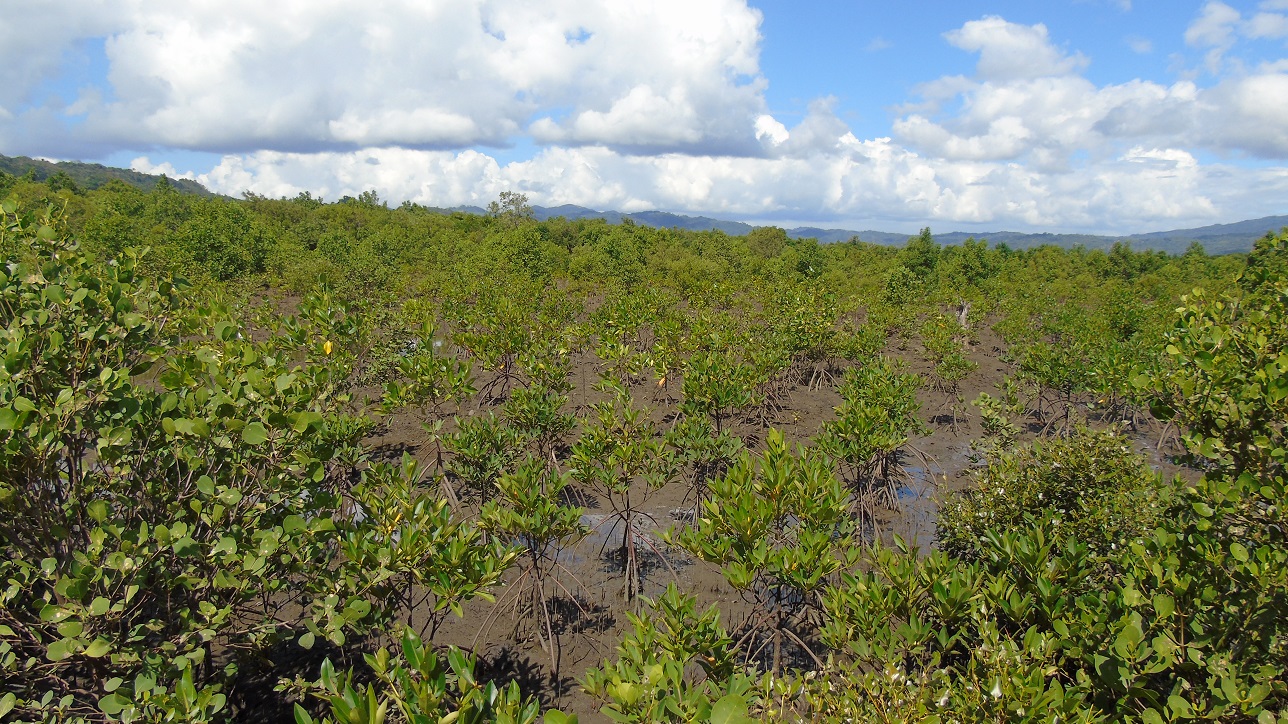Rehabilitating Mangrove Ecosystem: A Look at the Oriental Mindoro’s Mangroves

Several mangrove forests sit by the coast of Oriental Mindoro, Philippines. With their outstretched roots and cover, mangroves provide a great service to the ecosystems and communities near them. They also provide shelter to a wide array of marine and arboreal species, producing some of the most diverse ecosystems in the country. Human communities near these forests have a socio-economic relationship with them, as they can scour for shrimps, crabs, and mollusks to sell for profit. They also provide a buffer during storms and strong tidal waves, which can harm the structures near the mangrove forest. However, coastal erosion, urbanization, aquaculture, agriculture, illegal logging, and sand siltation, among others, pose a threat to the mangroves.
The paper “Regeneration Capacity and Threats to Mangrove Areas on the Southern Coast of Oriental Mindoro, Philippines: Implications to Mangrove Ecosystem Rehabilitation” by Aaron Froilan M. Raganas of UP Mindanao, Nelson M. Pampolina and Annalee Hadsall of UP Los Baños, and Stefan Hotes of Chuo University published in the Biodiversitas Journal of Biological Diversity examines the regeneration capacity of mangrove forests in six areas in Oriental Mindoro: Agsalin, Gloria; Tambong, Bansud; Dayhagan, Bongabong; Dalahican, Roxas; Cabalwa, Mansalay; and Caratao, Bulalacao. Community residents and staff from the Municipal Environment and Natural Resources Office (MENRO), Municipal Agriculture Office (MAO), Coastal Resources Management Office (CRMO), and ‘Bantay-dagat’ (coast guards) interviewed said they have observed some of the threats mentioned above in the mangrove areas in their respective municipality.
The study shows that mangroves are highly resilient and may even grow inland in more elevated areas. However, fishpond operations pose the highest threat to the regeneration of the mangroves and should be mitigated or at least minimized. The local government units (LGUs) should closely and constantly monitor the status of the mangrove areas to ensure their protection. The paper also confirms that mangrove-planting programs contribute positively but natural regeneration is still the best as the species composition will likely stay the same and it offers low labor demand, low soil disturbances, and good seedlings growth. Finally, the paper recommends that LGUs look into Assisted Natural Regeneration (ANR) in mangrove areas, reclaim abandoned fishponds, and encourage the practice of aquasilviculture system instead of the prevailing destructive fishpond practices.
Read the full article here: https://smujo.id/biodiv/article/view/6012
